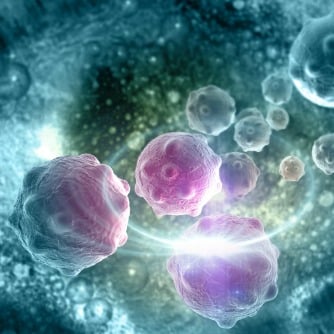Associate professor at the University of Texas San Antonio’s Department of Biology, Matthew Gdovin has developed a new method to kill cancer cells. Gdovin’s research involved injecting the chemical compound nitrobenzaldehyde into a tumor, enabling it to disperse into the tissue. He then aimed a beam of light at the tissue, which caused the cells to become very acidic inside and then to die off, or essentially commit suicide, as Gdovin says. “Even though there are many different types of cancers, the one thing they have in common is their susceptibility to this induced cell suicide,” he said. Within two hours, Gdovin estimates up to 95 percent of the targeted cancer cells are dead.
Gdovin went on to test his method against triple negative breast cancer, which is one of the most aggressive types of cancer, as well as one of the most difficult to treat. Normally, the survival outcome for triple negative breast cancer is very poor. Gdovin found that after merely one treatment he was able to stop the tumor from growing, thus doubling the chances of survival in mice. “All forms of cancer attempt to make cells acidic on the outside as a way to attract the attention of a blood vessel, which attempts to get rid of the acid,” he said. “Instead, the cancer latches onto the blood vessel and uses it to make the tumor larger and larger.”
Gdovin is currently testing his method on drug-resistant cancer cells, in order to make it as strong as possible. Additionally, he’s begun to develop a nanoparticle that can be injected into the body to target metastasized cancer cells. A wavelength of light passes harmlessly through skin, flesh and bone, then mobilizes the nanoparticle that kills the cancer.
It is Gdovin’s hope that his method will assist surgeons in treating difficult to reach tumors in areas such as the brain stem, aorta or spine. Additionally, it could be beneficial in cases where patients have received the maximum amount of radiation treatment and are no longer able to deal with the scarring and pain that accompanies it, as well as children who are at risk of developing mutations from the radiation as they age. There are so many types of cancer for which the prognosis is very poor,” said Gdovin. “We’re thinking outside the box and finding a way to do what for many people is simply impossible.”




